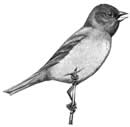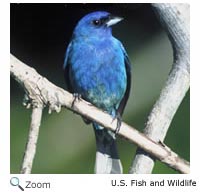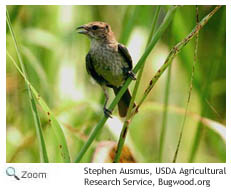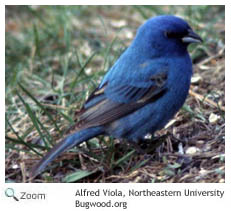Indigo Bunting - Passerina cyanea |
|||||||||||
Description
Range |
Habitat
Diet
The indigo bunting eats spiders, insects, berries, and seeds. It feeds alone during the breeding season and in flocks in the winter. Life Cycle
BehaviorThe indigo bunting is a neotropical migrator. It usually migrates at night and can travel as far as 2,000 miles to its winter range. |
||||||||||
Audio Credit: xeno-canto.org Chris Parrish |
|||||||||||



 The indigo bunting breeds from the Great Plains south to Texas through the eastern United States. It winters from southern Florida south to the
Caribbean, Central America, and northern South America
There are isolated populations found in some areas of the western United States.
The indigo bunting breeds from the Great Plains south to Texas through the eastern United States. It winters from southern Florida south to the
Caribbean, Central America, and northern South America
There are isolated populations found in some areas of the western United States. 
